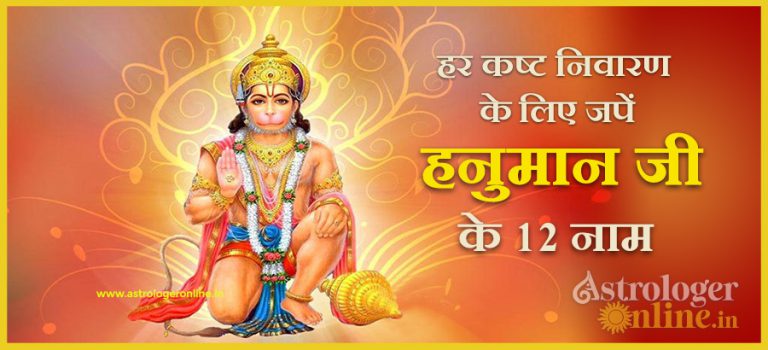Yoni Puja

Yoni Puja: Worshipping Shakti
The most notable composition about adoring the yoni is, without question, Yoni Tantra. Just like the case in numerous different Tantras, this tantric content is an exchange among Shiva and Parvati. It uncovers the profoundly worshipped sadhana rehearsed by kaulas (tantrics), the yoni puja.
It is realized that the Kaulas (Kaula or Kula depicts a sort of Hindu Tantra. The Kaula heredity (firmly connected to the Siddha and Natha customs) respected female masters exceptionally and there were numerous instances of yoginis or female tantrics. Their respect towards Shakti is wonderfully communicated ordinarily in the Tantras (like Shakti Sangama Tantra and Devirahasya). In the two Kulachudamani Tantra and the Brihad Nila Tantra, the Kaula is told to recount a mantra internally at whatever point he sees a lady.
In the conventional writings, we track down the accompanying references:
- “Women are divinity, women are life, women are truly jewels.” (Yoni Tantra, Patala 7)
- “Worship carefully a woman or a maiden as she is Shakti, sheltered by the Kulas. One should never speak harshly to maidens or women.” (Kaulajnananirnaya, Patala 23)
- “In Kaula each lady is considered as a sign of the Goddess. No man may lift his hand, strike or compromise a lady. At the point when she is exposed, men should stoop and worship her as the Goddess. She has equivalent rights with men on all levels.” (Occult World of a Tantrik Guru, Values Vol. IX)
- “Women are heaven; women are dharma; and women are the highest penance. Women are Buddha; women are the Sangha; and women are the perfection of Wisdom.” (Yoni Tantra)
- “Hari, Hara, and Brahma – the divine forces of creation, upkeep, and annihilation – all begin in the yoni.” (Yoni Tantra)
- “The divine yoni is as brilliant as tens of millions of suns and as cool as tens of millions of moons.” (Shiva Samhita, fifteenth century)
- “Devi is at the foundation of the yoni and Naganandini is in the yoni. Kali and Tara are in the yoni chakra, and Chinnamasta in the hair. Bagalamukhi and Matangi are on the edge of the yoni. Mahalakshmi (Kamalatmika), Shodashi (Tripura Sundari), and Bhuvaneshvari are inside the yoni. By adoring the yoni, one unquestionably venerates Shakti.” (Yoni Tantra, Patala 3)
- “For the sadhaka who says ‘Point Aim’ at the hour of worship, the yoni is lucky and gives both delight and freedom. A yogin isn’t a bhogin (searcher of delight) and a bhogin isn’t a yogin, however on the off chance that one reveres the yoni, one is a Kaula, an individual who has both yoga and bhoga (pleasure). All worship is trivial without worship of the yoni, O Durga.” (Yoni Tantra, Patala 3)
- “Loving this causes Shivoham. Tune in, Parvati! Krishna, subsequent to venerating Radha’s yoni, became God Krishna. Sri Rama Janaki Nath worshipped Sita’s yoni. Vishnu, Brahma, the holy people, and I myself all were brought into the world from a yoni. What information in the three universes can coordinate with the superbness of the yoni?” (Yoni Tantra, Patala 4)
- “The vagina is Mahamaya and the penis is Sadashiva. Worshipping them, one becomes liberated while still alive, there is no doubt about it.” (Yoni Tantra, Patala 5)
- “Freedom is accomplished through pleasure. Joy is acquired through delight. Accordingly, by each exertion, a sadhaka should turn into an enjoyer. The shrewd man ought to consistently stay away from fault, nausea, or disgrace of the yoni.” (Yoni Tantra, Patala 6)
WHAT IS A YONI PUJA?
A yoni puja is a hallowed custom during which the yoni is worshipped. Comprehend that the essential for loving the yoni is the cleansing of the psyche from common thoughts regarding the yoni. The yoni is the type of the universe and envelops the secrets of creation. Respect before Shakti’s secret is the demeanor that should be developed to play out a yoni puja. That is the reason in Yoni Tantra we track down this notice: “Never worship the yoni before pashus (guys actually moved by their creature nature).”
Outer Yoni Puja
A yoni puja can be performed by utilizing a model, painting, or blessed regular item addressing a yoni as focal point of adoration, or by venerating the yoni in her living structure. We can envision that as a custom of worship that returns millennia and which is as yet being rehearsed today in India, a yoni puja accepts numerous structures. In spite of these distinctions, there are a few ceremonial components with extremely clear imagery that establish the center of a yoni puja.
Components of Outer Yoni Puja:
- Greeting and veneration before Shakti
- Contributions to the Goddess: Those going to a yoni puja will typically offer five unique organic products or different things to the Deity, for example, bloom petals, rice, ghee, and so on
- Worship Stage: general supplications to the Goddess; reciting mantras
- Purifying of the 5 Elements: The five fluids are poured over the yoni. They address the 5 components. For the most part, such drinks address contributions for the Goddess, however for this situation the pouring of the 5 fluids over the yoni represents the universalizing and blessing of the 5 tattvas (components). The 5 fluids are gathered in a vessel underneath the yoni image (for a situation of a lady’s yoni, the vessel is put beneath the thighs). The last combination coming about because of this drink is enabled by the immediate and private contact with the Goddess. Each member of a yoni puja will take a taste from this prasad (consecrated contribution).
The 5 fluids are: Yogurt (Earth component), (Water component), nectar (Fire component), milk (Air component), and any eatable oil (Ether component).
Note: Yoni puja performed with a lady’s yoni is known as stri puja or rahasya puja. There are a few proposals for picking the lady for yoni puja on the grounds that it is viewed as that the force of Shakti communicated by means of the fluids to the fans relies upon the lady’s cognizant straightforwardness to the Goddess. That is the reason it is viewed as that the most ideal decision for a yoni puja is a yogini. A yogini, by her ability to channel the Goddess, makes the best conditions to raise the awareness of the individuals who partake in the function.
- For the most part, there is a phase considered the magic stage during which the admirers, before the apparent yoni, (both of a living lady or a picture of the Goddess) ask the Goddess to concede them wishes, everything being equal. Such wishes may go from “if it’s not too much trouble, fix my mom” or “kindly give me a child,” to the significantly more egocentric “let me have achievement in business and increment my financial balances.”
- The reflection stage: Contemplating the secret of Shakti. Assimilation into the belly of the Mother. Following Shakti energy back to its Source.
A yoni puja can be acted in blended gatherings, albeit here and there just ladies or just men might be in participation.
What is generally significant in a yoni puja is the dedication towards Shakti and determined consideration of the professionals. It is this blend of affection and mindfulness that empowers the raising of awareness during these ceremonies. The essential part of being in profound worship with and having veneration for the Mother in the entirety of Her structures cannot be overemphasized. Ladies are various aspects of the Supreme Shakti.
Inner Yoni Puja
Inner yoni puja infers that we should as unmistakably as plainly imagine the picture of a yoni (a model, an image, a purified object, or the living type of a yoni) and mull over it as far as might be feasible with commitment and worship.





